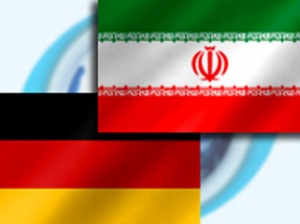By Jerusalem Post
Myth of impossibility of unilateral sanctions persists
BERLIN – Germany’s exports to Iran have totaled over 25 billion euros since President Mahmoud Ahmadinejad took office in 2005.
Last week’s visit by three German deputies to Iran, which included a meeting with the German-Iranian chamber of commerce, cast an unfavorable light on Germany’s unbreakable trade relationship with Tehran.
Flourishing bilateral trade relations between Germany and the Islamic Republic have been a source of frustration and anger at times for Israeli, British, French, and US efforts to impose tough EU economic sanctions.
While Berlin has codified legislation to protect the religious freedom of Jews and Muslims regarding circumcision within a rapid fire period of time in 2012 – Bundestag lawmakers refuse to pass unilateral economic sanctions modeled on US legislation to ratchet up the pressure on Iran.
Dr. Wahdat-Hagh, a leading German-Iranian expert on Iran’s economy and regime, told The Jerusalem Post on Friday that Germany’s volume of exports “stabilize the power of the totalitarian dictator in Iran.”
A comprehensive statistical account of German-Iranian trade from the Federal Republic’s office of statistics in Wiesbaden viewed by the Post on Friday, covering 1950 to 2011, depicts a booming trade relationship with Ahmadinejad’s government.
Dr. Wahied Wahdat-Hagh, a Fellow at the European Foundation for Democracy , analyzed the numbers and told the Post, that “the numbers are better for Ahmadinejad than during the period of the Shah [Mohammad Reza Shah Pahlavi, who ruled Iran from 1941 to 1979].”
In 1975, German exports had already totaled 2.64b. euros and in 1975 rose to 2.94b. euros.
That two-year period was the zenith of German-Iranian trade with the Shah.
Wahdat-Hagh noted that in 1977 Germany had exported roughly 3.24b. euros worth of goods to Iran and in 1978 about 3.46b. euros worth.
According to the data, in 2005, the first year of Ahmadinejad’s presidency, German exports to Iran amounted to 4.37b. euros. The second year, 2006, saw 4.15b.
In 2007, exports reached 3.6b. euros and in 2008 the volume of exports climbed to 3.9b euros.
Both 2009 and 2010 saw exports hit 3.78b. euros each year.
By 2011, German exports resulted in 3.08b. euros worth of revenue for German companies.
Wahdat-Hagh said despite the sanctions – and a decrease over the years – Germany’s exports were booming.
The effort to prevent the criminalization of circumcision in Germany indicates that the Bundestag can move forward with unilateral sanctions on Iran and need not hide behind the curtain of the EU, waiting for a common European approach.
German officials and politicians frequently argue that they have to conform their sanctions to EU stipulations. However, the telling example from German’s Interior Ministry’s 2008 ban on the availability of the Hezbollah television network Al-Manar in private hotels – independent of EU sanctions – reveals that crippling German sanctions are simply a matter of political will.
The writer is a European affairs correspondent and fellow at the Foundation for Defense of Democracies.
The Iran Project is not responsible for the content of quoted articles.

 QR code
QR code